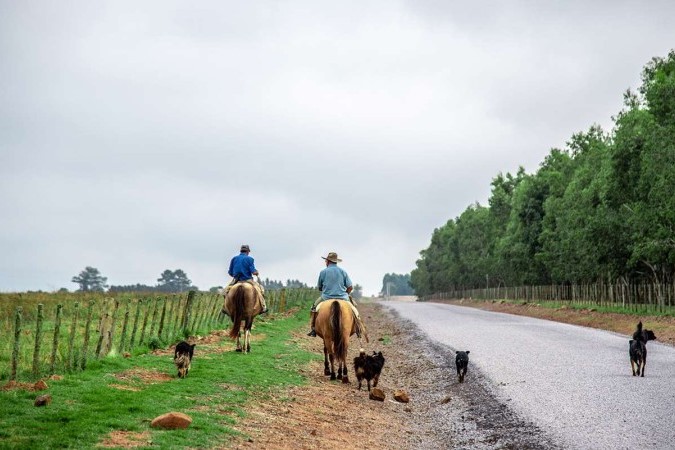 Enhancing the contribution of forests to local communities
Enhancing the contribution of forests to local communities
From mutually planning forestry projects to partnering with local conservation groups, commercial forestry can have a wide-ranging social impact on local communities.Forests play a vital role in rural communities around the world. They provide incomes to families through employment, tourism and wood sales. They provide nutritious food such as berries, mushrooms, wild herbs, and game. They provide the setting for recreational activities and long-held traditions, such as foraging, hunting, and hiking.
Forestry and forest products have a wide-reaching environmental, economic and social impact. Communality contributes to positive societal impacts, whether through cooperation with regional institutions and civil society groups or increasing social consciousness in the supply chain. At UPM, community-building is driven through four principles: mutual planning, civil society partnerships, giving back to communities and a sustainable supply chain.
Social forestry
When it comes to mutual planning it is all about engagement, and then empowerment. Instead of merely consulting local communities over upcoming forestry plans, forest experts should actively seek community involvement with proposed plans from the outset.
For example, UPM jointly designed forestry activities at its two forest holdings in Heinävesi alongside biologist and former chair of the Finnish Association of Nature Conservation (FANC) Risto Sulkava.
The carefully designed procedures combined carbon sequestration, wood procurement for renewable products and conservation efforts over 762 hectares. “I worked with UPM Forest and the harvesting contractors on a plan to operate in the Heinävesi area where the Siberian jay population is still living,” explains Sulkava. “As a result, some areas were harvested by continuous cover silviculture methods last year, which was partly new for the UPM organisation, and other areas were not harvested at all. Thanks to the plan, the Siberian jay is still healthy in the wider surrounding area.”
The second principle is by interacting with civil society groups, who represent interests beyond the local community and are an important source of knowledge and expertise. This makes it crucial for forest experts to share insights with NGOs and charities in order to achieve mutual gain.
For instance, UPM works with nature conservation groups to map and support threatened species at forested sites, sharing research, producing inventories and devising practical solutions. According to the Chair of the Finnish Osprey Foundation, which aims to protect Finnish birds of prey, Ilmari Häkkinen, active cooperation focuses on updating the “location data of osprey nests and their protection in UPM company forests. Due to the lack of suitable nesting trees, UPM has sponsored the Osprey Foundation to build artificial nests for ospreys with good results. We also prepared a joint brochure giving advice to forest owners on how to manage forests near an osprey nest.”
Back to the basics
Giving back to communities is a critical element of sustainable forestry. Forestry indirectly benefits local communities through tax contributions, which support local schools, healthcare facilities, libraries and other community services that are often at risk in rural areas. But sustainable forestry management can also make a more direct contribution.
In the US, for example, UPM helped conceive ”The Future Forest Stewards” (FFS) event, which introduces local high school students to the forest industry and the jobs which are available. The students visit the mills, see logging equipment in operation and learn about opportunities in their local area.
Meanwhile, UPM’s plant in the centre of Uruguay helped launch the local Technical University (UTEC) in the town of Fray Bentos. The construction of the pulp mill brought an influx of professionals to the underserved region, who not only became the university’s first teachers but also showed local communities they could live, study and get professional employment in the country’s interior.
Finally, all of this culminates in building a sustainable supply chain. From planting, managing and harvesting trees to transporting the wood to the mills and manufacturing wood products, all cogs of the forestry supply chain should follow responsible practices and actively seek sustainable solutions.
For example, all UPM Forest employees, contractors and suppliers are not only qualified with a degree in forestry or relevant fields like ecology, water protection and wildlife management but also take part in a mix of in-field and web-based training courses on topics such as forest management, soil preparation and biodiversity protection.
Meanwhile, every contractor and supplier in UPM wood sourcing and forestry must adhere to UPM Supplier and Third Party Code, which sets strict obligations regarding the treatment of staff to prevent discriminatory practices, human rights abuses and health & safety violations. UPM carries out audits to ensure contractors’ compliance with 124 supplier audits completed last year despite the pandemic. In addition, about 300 contractor reviews with focus on working conditions were carried out.
Whether it’s spruce-laden peatlands in Finland, pine forests in the US or eucalyptus plantations in Uruguay, UPM ensures that commercial forestry is much more than a commercial business: it’s a socially conscious endeavour that supports and sustains local communities.
